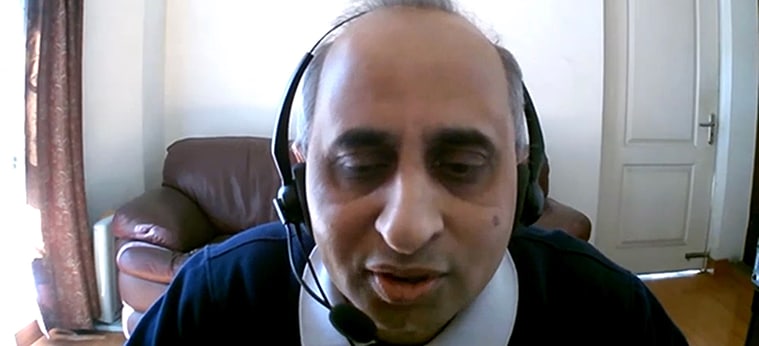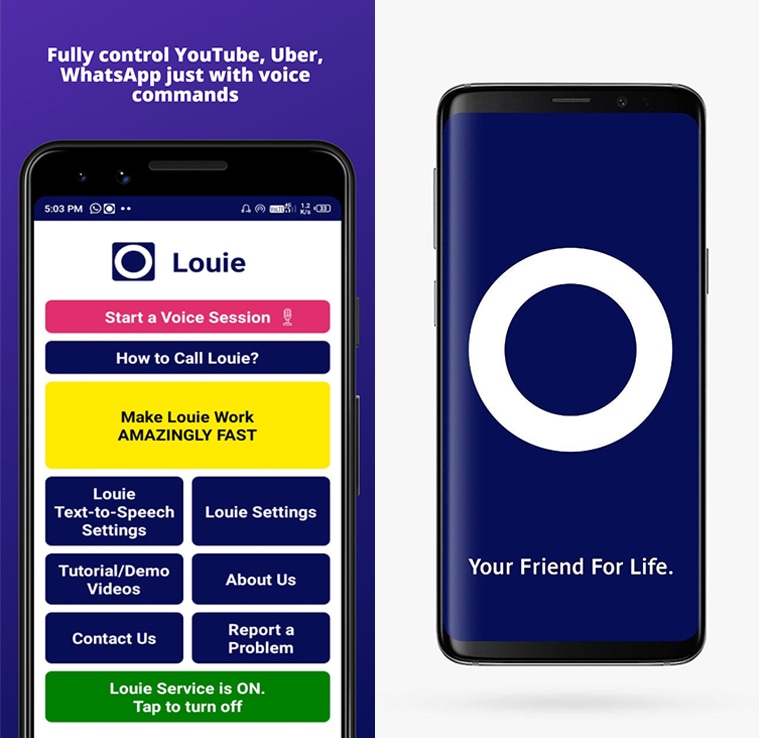This IITian lost vision 8 years ago, he now develops ‘voice app’ that helps the visually impaired use popular apps
Pramit Bhargava, an alumnus of IIT-BHU and IIM-B, is behind the Louie app that enables visually impaired users to use popular apps with voice commands.

A drug reaction 20 years ago affected the retina of Pramit Bhargava, an alumnus of IIT-BHU and IIM-B. Since then, he slowly started losing his vision, and by 2012, it had dropped to a point when he could not read anything. Losing his vision had impacted Bhargava, both mentally and physiologically. Low on confidence, the 53-year-old even started questioning himself.
“I was becoming so dependent on people because of the lack of technology. Even though I’m a good user of technology, I realised that the only thing available for the visually impaired was a basic screen reader that was fairly basic, and was difficult to use,” he told indianexpress.com in an interview.
“Louie, in a way, is all about solving my own problem, and with the hope that it will work for other people as well,” said Bhargava, the creator of ‘Louie Voice Control’.
Bhargava visualised a mobile app that could be a ‘virtual friend’, doing interactions like humans – something he himself wished existed for booking a cab or sending a WhatsApp message. While the idea of a mobile that lets blind and visually impaired use commonly used apps and controls the phone with voice commands had a potential, Bhargava initially struggled to get developers on board. But once he secured funding from Sequoia Capital, Bhargava recruited his own developers and started working on the app. His team now consists of 14 people, including three visually impaired developers who are in the area of testing as well as user experience.

Bhargava says the mobile app, ‘Louie Voice Control’, is a part of the larger effort to make tech products and services accessible for the people with disabilities and special needs. With smartphones becoming more accessible than ever, it becomes natural to design solutions that benefit a larger section of the society, including blind and visually impaired people. The app’s name Louie was derived from Louis Braille, inventor of the Braille, a system that enables blind and visually impaired people to read and write through touch.
“Whichever app we support, whatever phone functionality we support, we got to make Louie so good that just like a sighted person, a visually impaired person should also be able to do each and everything within that app with just voice commands,” he says.
Louie is designed to be an accessibility app and the voice functionality is an integral part of the solution. “It’s a very complex technology, and no other app in the world is actually using it the way we are,” he said. But how do you differentiate between your solution vs Google Assistant, Alexa or Siri?
“The difference in approach is that if you take the voice assistants, be it Google Assistant, Siri or Alexa, they are meant for the sighted masses,” he explains. Citing the example of Uber, Bhargava said none of these voice assistants can actually do a complete booking. “What Louie does is that it will ask you for the destination, it will tell you the rides and the order of increasing prices and then it will confirm pick up. Even post booking, you can call the driver and cancel your ride. They do superficial support for each app, what we do is we do complete 100 per cent support within an app that we voice-enable,” he said. For Bhargava, the blind and visually impaired is the use case for Louie and that itself differentiates the app from Google Assistant or Alexa.
Bhargava says the core technology used to develop the Louie app is developed in-house. However, there are many supporting technologies that are used to make the app come from Google. For example, the Louie app uses Google’s speech to text conversion, which is where a lot of artificial intelligence comes into play. “With Louie, you can set up any voice engine and voice that you want. We don’t have a voice of our own,” he said.

Bhargava says the app, which is currently available on Android, has a user base in 70 countries and there is a WhatsApp group that is being used to get the feedback from users. “Practically 99% of the users that we have are all visually impaired.”
Big tech companies like Apple, Google and Microsoft have been making their products more accessible for the disabled. With iOS, Apple has added features designed to make its devices easier to use for people with disabilities. Microsoft meanwhile offers an Xbox Adaptive Controller specially designed for people with special needs. Google, too, is not behind in its efforts to make its services accessible for disabled. It recently added Live Caption, a feature which transcribes videos and audio on a smartphone in real-time. Efforts are being made to make products that benefit everyone, but the accessibility tech is still in progress.
“One of the reasons why this app is so complex for us is that there is no one standard Android and unlike iOS where accessibility features are baked in, here there are various versions of Android, particularly the Chinese phones, where different phones have got different versions of Android. Because accessibility is like an afterthought, it’s not baked in so you can make an app which will be completely inaccessible,” he said.
Source: IndianExpress


